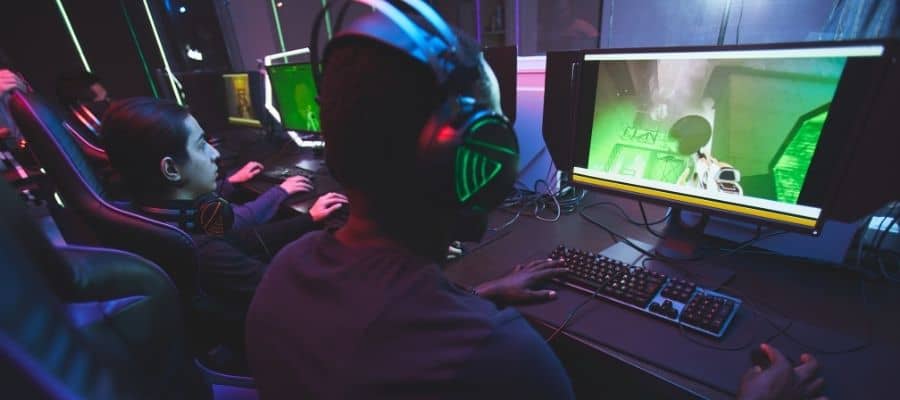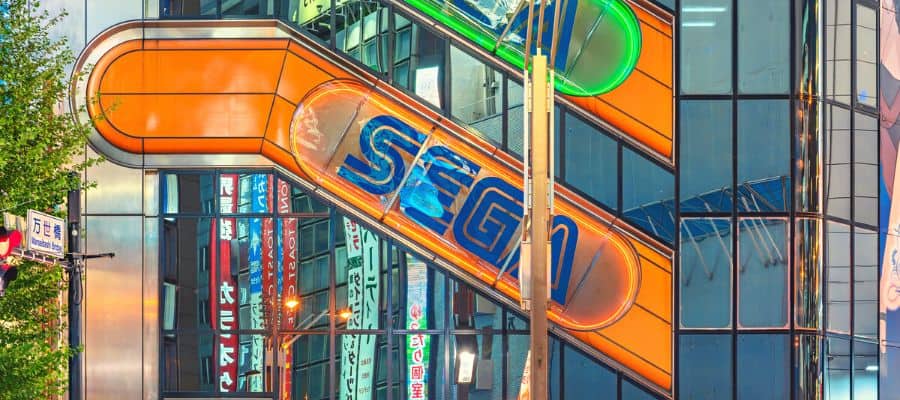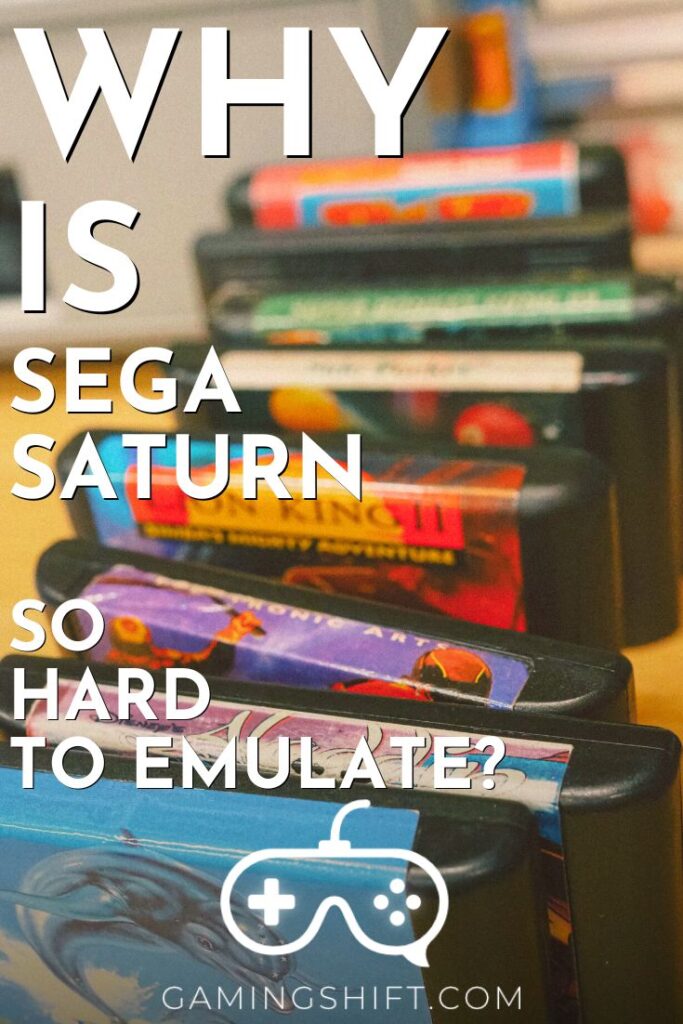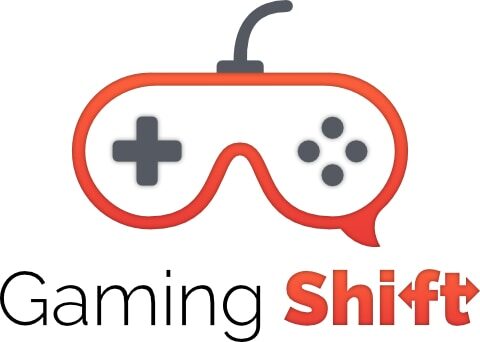Sega went all-out during the 5th console generation to dethrone Nintendo and deal with the upcoming challenger called Sony. Compared to its 16-bit predecessor, Saturn delivers a massive leap in processor technology. However, this increased speed came at the expense of complexity which made the console quite hard to develop games for.
Why is Sega Saturn so hard to emulate? It boils down to two primary factors, the first of which is the complicated multi-processor design that incorporates dual Hitachi SH-2 microprocessors along with six other coprocessors. Secondly, the Sega Saturn utilizes quadrilateral polygons instead of triangles to render 3D graphics.
Despite its immense processing power and forward-looking design choices (CD-ROM drive), Sega’s 5th gen console was a commercial failure. Sega kept its development under wraps and barely communicated with third-party developers who didn’t get enough time to train on this overly complicated system. As a result, Saturn didn’t have nearly enough launch titles to help it compete against the PS1 and Nintendo’s upcoming N64.
Why Is Sega Saturn So Hard To Emulate?

If you take a look at consoles from the 5th generation (between the mid to late 1990s), none are as hard to emulate as the Sega Saturn. It’s quite puzzling how complex the emulation for this console is because much more powerful consoles from the 6th gen (like PS2) are emulated relatively easily. Right now, if you’re using a PC you only have a couple of reliable emulators that will run a majority of Saturn games without performance issues.
SSF, Yabause, and Mednafen are all fairly good at Saturn emulation. But there are still some games that generate glitches, crashes, etc. while running on these emulators. And given how powerful any modern PC is, one wonders why we are having so much trouble emulating a 32-bit console from the 1990s.
The answer lies within Saturn’s plastic shell. Open it up, and you’ll find a motherboard that looks like a small city filled with electronic inhabitants and skyscrapers made out of silicon. There are a total of 8 microprocessors in the Sega Saturn, each responsible for handling various tasks from graphics to sound.
Modern consoles integrate the CPU, GPU, and I/O management into a single package. Audio is also handled by this main processor. But back in the day, lithography processes weren’t advanced enough to integrate so many functions into a single chip.
And it was cheaper to solder a bunch of existing chips onto a motherboard than create an all-in-one processor from scratch. Sega wanted a next-gen console fast, and they wanted to do it with existing technology. So they took two Hitachi SH-2 32-bit processors, a Motorola 68EC1000, a sound processor, and two video processors, and slapped it all onto a single board.
Then, they added a Yamaha FH1 Digital Signal Processor (DSP) to handle FM synthesis and pulse code modulation for Sega Saturn’s 32-channel audio. Even the CD-ROM drive has its own dedicated processor in the form of a Hitachi SH-1, to compress load times. Finally, you have a System Control Unit (SCU) chip to coordinate communications between all the buses (it also has an internal DSP).
Imagine if you can, the nightmare of recreating all this lunacy inside a virtual environment. Which is what emulator developers have to do. And they must also conduct various tests/ optimizations to make sure that this emulator works across an infinite number of PC hardware configurations.
What Is The Best Emulator For Sega Saturn?

If you’re on PC, the best standalone emulators are SSF, Yabause, and Mednafen. I also recommend you give RetroArch a try. It’s not an emulator, but a general-purpose GUI frontend for all retro consoles/ arcades.
Within RetroArch, you can download “cores” for various systems. The best Saturn core within RetroArch is Beetle. Alongside the core, you’ll also need a BIOS file.
Is Sega Saturn Stronger Than PS1?
There are areas where Sega’s Saturn trumps the PS1, and there are areas where the PS1 is stronger than the Saturn. When it comes to 2D graphics, the Sega Saturn was more than a match for PS1. Thanks to its dual Hitachi SH-2 processors clocked at 28.6MHz (PS1 has a single R3000 clocked at 33.8MHz), Saturn has more theoretical processing power than PS1.
However, harnessing the full potential of Saturn was very hard because of its complexity. Saturn can also draw more pixels, and do it faster than PS1. That’s because PS1 relies on its polygon engine while Saturn draws pixels through hardware on the processors.
PS1’s Geometry Transform Engine (GTE) was an excellent video processor for its time. But if Saturn’s VDP1 and VDP2 are used in coordination with the SH-2 processor and DSP, they could outperform PS1 in terms of geometry processing and polygon fill rate. In essence, Saturn has more potential power but it’s a lot harder to tap into unless you’re a genius developer who’s had sufficient time to train on the Sega Saturn.
Is Sega Saturn A Bad Console?

On the surface, it seems like a really good console with how much power it has. But once you start looking into the details, it becomes clear that Sega rushed this product to the market and was desperate not to fall behind Sony’s PS1. Originally, Saturn was supposed to have just one Hitachi SH-2 CPU.
This processor was selected because it was cheap, readily available, and would speed up the production chain. Sega wanted to get their new console to the market fast before PS1 and N64 were released. And they just didn’t have the time to sit down and create a brand-new CPU design from scratch.
However, the engineers soon realized that one SH-2 wasn’t enough to compute a realistic 3D world. So they added a second one. And just when Sega was applying the finishing touches to Saturn in late 1993, rumors of the PS1 and its 3D capabilities started to spread like wildfire. Sega’s executives were deeply concerned that Saturn’s 3D performance would fall behind PS1.
So they decided to add a second video processor (VDP2). Now, the console has two main processors and two video processors. It was a last-minute job, and developers weren’t notified of hardware changes ahead of the release schedule.
As a result, they didn’t get enough time to train on Saturn’s complicated design. When the console was finally released in 1994, it took a while for 3rd parties to create decent games for it. Sega’s reputation had already taken a hit with the 32X and customers weren’t too happy with the slow rollout of games for Saturn.
Why Was Sega Saturn A Flop?
Yes, it was a commercial failure and caused Sega to lose tons of money. Money that it couldn’t afford to lose after the failure of 32X and the Sega CD. Because Sega was losing money, they couldn’t fund an expensive marketing campaign like in the Genesis days.
However, Nintendo was doing just fine and could afford to spend a lot more money on marketing. By releasing quality games and not rushing unfinished products to the market, Nintendo earned the trust of gamers. Gradually, Sega started to fade away from the gaming scene.
Saturn got very few games on launch day, and its library was quite underwhelming compared to PS1 and N64. Plus, it launched at $399 which was $100 more than PS1. Saturn sold just 9.2 million units to the PS1’s 102.4 million.
How Much RAM Did The Sega Saturn Have?
Saturn had 2MB of general-purpose RAM, 1.5MB of VRAM, and 512KB of RAM for audio. Nothing earth-shattering, but quite impressive given its release date of late 1994. Plus, this was enough to run early 3D games at a resolution of 320 x 224 (going all the way up to 704 x 224).
Conclusion
I hope this article helped you understand the complexity of Saturn’s design and why it’s still so hard to emulate this console properly. It’s not a matter of computational difficulty because modern systems are more than capable of pushing several hundred FPS in Saturn games. Rather, it’s a design issue.
The people making Saturn emulators have to spend a lot of time testing and certifying the emulator for various games, across different PC configurations. Sega didn’t do game developers any favors by making such a complex console. And its complexity was one of the reasons behind Saturn’s demise.
If you found this article useful, you may want to save this pin below to your Gaming board.

